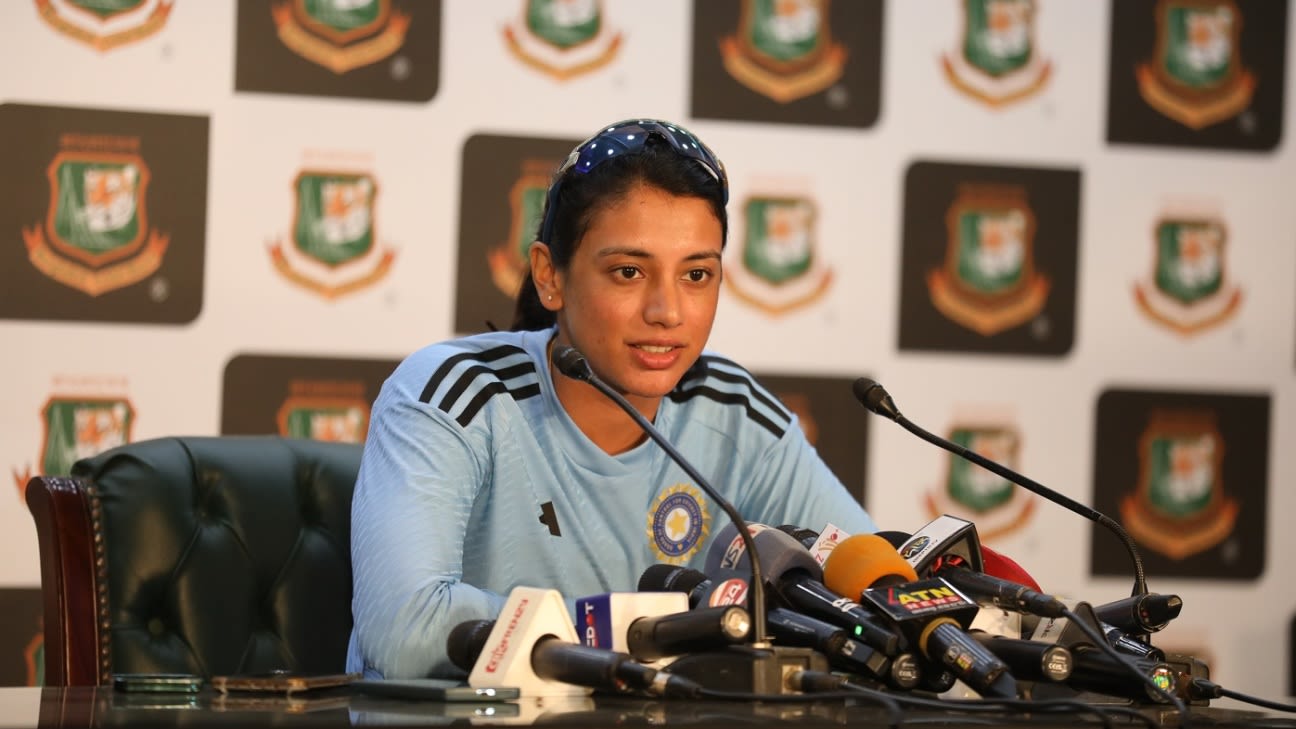
Bangladesh have done their homework by not giving the opener much pace to work with upfront. That was reflected in her mode of dismissals: out to spin in four of the five innings. It's unlikely Bangladesh would want to change that ploy come Saturday when both sides square off in the final ODI.
Mandhana admitted she hasn't been able to apply herself the way she would have liked. But she revealed she was doing all that she could to shred that patchy form.
"I think I've been batting well in the nets; in matches as well, I've been getting starts," Mandhana said. "It doesn't happen a lot of times that I'm middling the ball but not getting runs for the team. I've been working on it.
"In the last match, I was pretty positive in the way I was able to get the team off to a decent start, but I threw my wicket away. It's more about application. Batting-wise, it's going well but it's just that my application hasn't been the way I've always applied myself. That's something I've been working on."
Mandhana had a middling run in the WPL, a tournament where she made several dazzling starts but failed to kick on. Ultimately, Royal Challengers Bangalore, the team she led, finished fifth in the six-team event, with Mandhana finishing with 149 runs in eight games at a strike rate of 111.19, which is far below her T20I strike rate of 123.49.
"After the WPL, we didn't have a lot of tournaments. I've put in a lot of work in the last three months, both in terms of my cricket and batting. I haven't been able to convert into big scores but the kind of work I've put in, it will reflect soon and I'll get consistent scores."
"These wickets need a lot more application than a flat track. I won't say it suits our style of batting, but it's about how we adapt."
Smriti Mandhana
Mandhana chuckled when asked if these wickets suited her team's style of play. All the games have been played at the Sher-e-Bangla Stadium in Mirpur on two-paced decks, where the ball has turned, stopped on batters, and even kept low at times. It was evident that most Indian batters have had to drastically deviate from their natural games playing on this surface.
"Definitely, these have been challenging wickets to play on, I don't know if it suits which style of batting," Mandhana said with a laugh. "I won't really stress much on the wicket. The way we applied ourselves in the last match and got to 200-plus [was very good]. These wickets need a lot more application than a flat track. I won't say it suits our style of batting, but it's about how we adapt. As cricketers, we have to do that whenever you play."
"I think she has a very different action," Mandhana assessed. "For her action, she's a lot quicker than we feel she is. Her ball definitely skids more than what we expect from her release point. She's a very good cricketer. I had a small chat with her post-match, congratulating her on her efforts. It has inspired all of us as well.
"It doesn't matter what her age is, the effort she is putting on the girls is amazing to watch. [With] the kind of fire she has, she will be an amazing cricketer for Bangladesh. With her bowling, she is maybe 2mph quicker than you feel. Definitely, these wickets aren't helping her as much, have to see what she does in England and Australia."
Mandhana also lauded Bangladesh for making the series a lot more competitive than many thought it would be. "We played them at the Asia Cup in Sylhet last year, from then to now, the way they've grown, especially as a bowling side," she said. "I feel their fielding efforts have been amazing. Definitely on these wickets, their bowling attack is very good, but as I said, for us it's about preparing ourselves to be better players."
Shashank Kishore is a senior sub-editor at ESPNcricinfo















 Phone: (800) 737. 6040
Phone: (800) 737. 6040 Fax: (800) 825 5558
Fax: (800) 825 5558 Website:
Website:  Email:
Email: 






